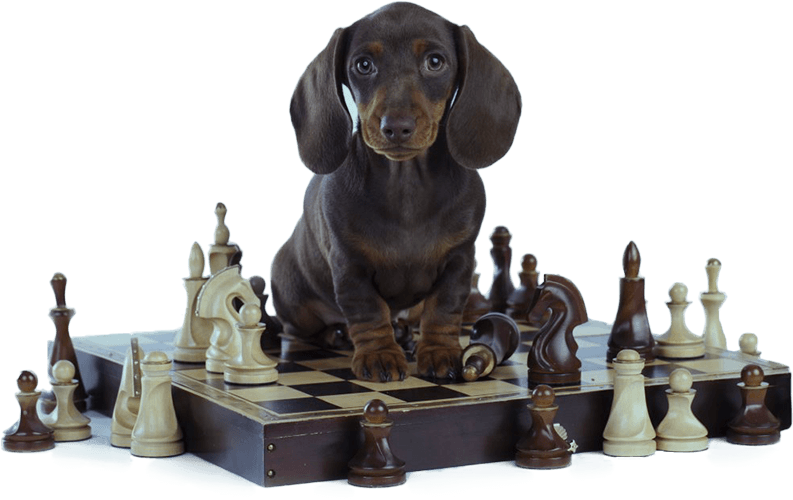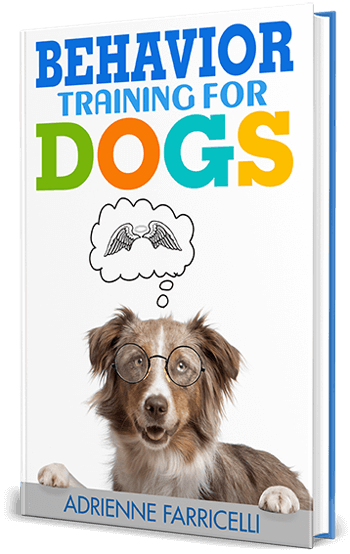
- Home
- »
- Advertorial
- »
- The Day I Almost Gave Up on My Dog
The Day I Almost Gave Up on My Dog
I never thought having a dog would be this hard.
When I brought Max home, I pictured long walks, games of fetch, and lazy Sundays on the couch. What I got instead was chaos.
Max did not listen. At all. He pulled on the leash so hard I nearly tripped. He barked at everything—birds, cars, neighbors, even the wind. He chewed my shoes, my couch, even the corner of my coffee table.
“It’s just a phase,” people told me. But weeks turned into months, and Max only got worse. One night, after a long day, I came home to find my living room torn apart—cushions shredded, garbage everywhere. He had even chewed through a power cord.
I sat down on the floor, head in my hands. “I don’t know what to do.” I had tried everything—treats, stern voices, long walks, training guides. Nothing worked.
For the first time, I thought, Maybe I made a mistake.
Develops your Dog's Hidden Intelligence
A Simple Change That Turned It Around
I didn’t want to give up on Max. He was a good dog, just… wild. He needed help. I needed help.
Then I found Brain Training for Dogs.
At first, I wasn’t sure. I had tried different training tips before, but they all felt the same. Short commands, leash tugs, rewards. This was different.
Instead of just teaching Max to “stop” bad behavior, it taught him how to think.
Develops your Dog's Hidden Intelligence
Why This Worked When Nothing Else Did

Most training I had seen before was about stopping habits—barking, chewing, jumping. But this method went deeper.
Max wasn’t being stubborn—he just didn’t know how to focus. He needed mental work as much as he needed physical exercise.
The first time I tried the Airplane Game, I didn’t expect much. I moved a treat from side to side, making Max follow it with his eyes. It seemed simple. But after a few rounds, I noticed something.
Max was paying attention to me—not the window, not the sounds outside. Me.
“It’s like a switch flipped in his head.”
That’s when I realized: He wasn’t just learning tricks. He was learning how to listen.
The Simple Games That Changed Everything
This wasn’t about endless drills. It wasn’t about punishment. It was about fun, simple games that taught Max to focus, to control himself, to listen.
Here’s what made the biggest difference:
- The Treasure Hunt Game – Kept him busy, stopped his chewing.
- The Look at That Game – Helped him stop barking at every little thing.
- The Magic Carpet Game – Taught him patience and self-control.
Develops your Dog's Hidden Intelligence
Each game was quick. Five minutes a day. That’s all it took.
What Changed for Me and Max
By week two, I saw it—small changes.
He still barked, but not as much.
He still pulled on the leash, but now, he looked at me for direction.
He stopped chewing my things and focused on his toys instead.
By week four? He was a different dog.
- He sat when I asked.
- He stayed calm when guests came over.
- He walked next to me instead of dragging me down the street.
“I finally felt like we understood each other.”
You Have Three Choices
At this moment, you stand at a crossroads.
Choice One: Do Nothing
You could close this page and walk away. But if you do, nothing will change. Your dog will still struggle. You’ll still feel frustrated. And over time, those bad habits will only get worse.
I know this because I almost made the same mistake. I almost gave up.
If you’re here, reading this, it’s because you know something needs to change.
Choice Two: Figure It Out on Your Own
You could try to train your dog without help. But trust me, I’ve been there. I spent hours reading articles, watching videos, and trying random tricks that never worked.
I wasted so much time and money before I found this.
If I had known about this course earlier, I would have saved myself months of stress.
Choice Three: Take the Easy Path
Click the button below and get instant access to Brain Training for Dogs.
Develops your Dog's Hidden Intelligence
- No risk. If it doesn’t work, you get your money back.
- No guesswork. You’ll know exactly what to do, step by step.
- Real results. Your dog will learn fast, and training will actually be fun.
This isn’t just about stopping bad behavior. It’s about building a bond with your dog.
Imagine What Your Life Could Be Like
Think about where you are now. The frustration. The stress. The worry that things will never get better.
Now, picture your life just days from now.
- No more barking fits.
- No more chewed-up shoes.
- No more pulling on the leash.
- No more ignoring your commands.
Instead, your dog listens. Your dog trusts you.
You have the pet you always dreamed of—calm, happy, and obedient.
This is not a gamble. You risk nothing.
You Have Nothing to Lose
This is 100% risk-free. If it doesn’t work, you get your money back—no questions asked.
You’re not guessing. You’re following a proven system that has helped thousands of dog owners just like you.
Click the button below and start now.
Your dog is waiting for you to take the first step.




